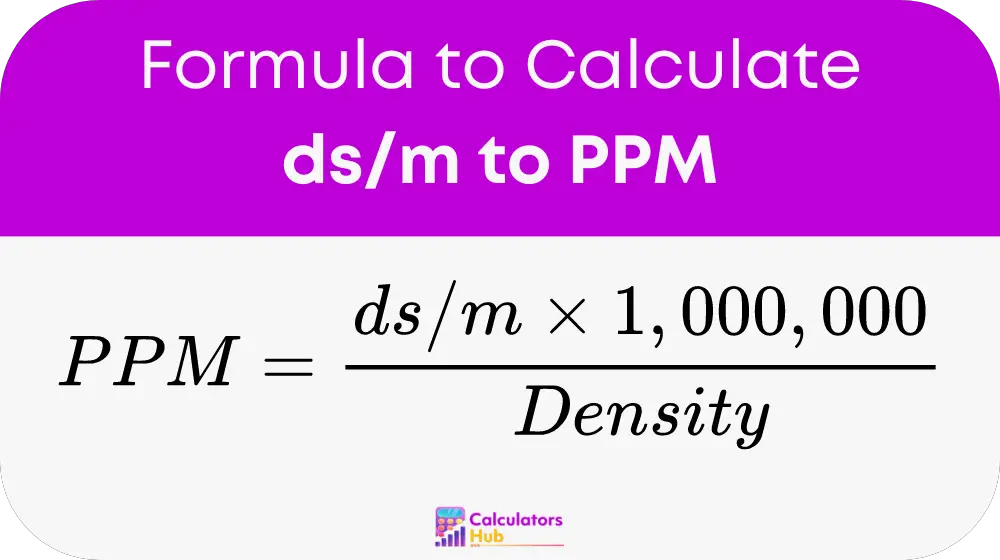Conductivity, or decisiemens per meter (ds/m), measures a material's ability to conduct electric current. In many industrial processes, it is crucial to convert this measurement to parts per million (PPM) to understand the concentration of solutions more clearly. The ds/m to PPM conversion is particularly significant in managing the salinity of water in agricultural settings or monitoring the chemical composition in water treatment facilities.
Formula of ds/m to PPM Calculator
The formula for converting ds/m to PPM is straightforward yet requires precise data:

To use this formula, you need the conductivity value (ds/m) and the density of the substance involved, which varies depending on the material being measured. Knowing these values allows for accurate conversion and ensures that solutions are correctly formulated.
Conversion Table for General Terms
For convenience, here's a table of typical densities for common substances used in these calculations:
| Substance | Density (kg/m³) | Example ds/m | Calculated PPM |
|---|---|---|---|
| Fresh Water | 1000 | 1.5 | 1500 |
| Sea Water | 1025 | 2.0 | 1951 |
| Industrial Solvents | 800 | 0.8 | 1000 |
This table helps users quickly convert ds/m to PPM without manual calculations, enhancing efficiency in urgent or routine tasks.
Example of ds/m to PPM Calculator
Consider a scenario where you need to convert the conductivity of sea water from ds/m to PPM. Suppose the conductivity is measured at 2.0 ds/m. Using the density for sea water from the table (1025 kg/m³), the calculation would be:
PPM=(2.0×1,000,000 / 1025)≈1951 PPM
This example illustrates the formula’s application, guiding users through the process with practical insights.
Most Common FAQs
Ds/m measures how well a substance can conduct electricity, which is crucial for determining the concentration of solutions in various industries.
Accurate PPM measurements ensure that industrial processes adhere to safety and quality standards, crucial for product reliability and regulatory compliance.
Yes, the calculator is versatile but requires the accurate density of the substance for precise results.